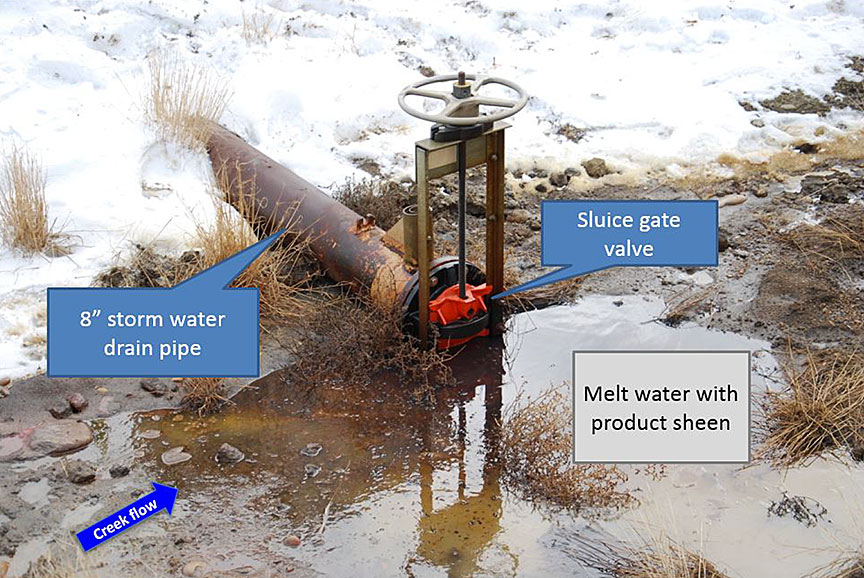In its investigation report (P17H0019) released today, the Transportation Safety Board of Canada (TSB) determined that the lack of detailed inspection procedures contributed to the March 2017 crude oil leak into an Alberta creek.
The leak caused no injuries and no evacuation was required. During a routine verification on March 20th, 2017, Enbridge employees discovered traces of crude oil on the water surface in a creek that runs through the company’s Edmonton Terminal. The source of the leak was a three-inch ball valve from an on-site storage tank. An estimated 10 cubic metres of product was released into the tank’s secondary containment berm. Three cubic metres of the product were then released from the berm through its stormwater drainage system into the creek.

Emergency response resources, which were available on site, were deployed within a few minutes to identify the origin of the leak and mitigate the impacts of the release. As a result, all released product was recovered from the containment berm and from the creek before the product reached the nearby North Saskatchewan River.
The investigation determined that the leak occurred when a gasket between the two halves of the ball valve was displaced out of its original position, likely due to volume expansion of frozen water within the valve. The product that was released into the creek flowed from a sluice gate valve at the end of the berm’s stormwater drain pipe. The sluice gate valve could not achieve a liquid-tight seal due to corrosion.


Although Enbridge conducts inspections at regular intervals, detailed procedures had not been implemented to assist inspectors with evaluating the condition of tank or berm components and with determining whether the components were suitable for continued service.
Following the occurrence, Enbridge initiated actions to ensure that all tank and containment berm components are thoroughly inspected. The company also reviewed its maintenance procedures, as well as its hazard assessment and emergency response plans. The National Energy Board, which is responsible for regulating pipelines under federal jurisdiction, monitored the clean-up process and initiated a review of the occurrence to verify Enbridge’s compliance with regulatory requirements, ensuring that the company took adequate corrective, preventive and safety actions.









